Cell
A cell is the basic structural and functional unit of all living organisms. It is the smallest unit of life that can replicate independently. Cells were first discovered by Robert Hooke in 1665 when he observed a piece of cork under a microscope and saw small, box-like compartments which he named "cells."
Types of Cells
There are two main types of cells:
- Prokaryotic Cells: These are simple cells that do not have a nucleus or other membrane-bound organelles. Examples include bacteria and archaea.
- Eukaryotic Cells: These are more complex cells that have a nucleus and other membrane-bound organelles. Examples include cells in plants, animals, fungi, and protists.
Cell Structure
The typical eukaryotic cell contains the following structures:
- Cell Membrane: A semi-permeable barrier that surrounds the cell and regulates the passage of substances in and out of the cell.
- Nucleus: The control center of the cell that contains the genetic material (DNA).
- Cytoplasm: The gel-like substance inside the cell where organelles are suspended.
- Organelles: Specialized structures within the cell that perform specific functions, such as the endoplasmic reticulum, Golgi apparatus, mitochondria, and chloroplasts (in plant cells).
Cell Functions
Cells carry out various functions to maintain life, including:
- Metabolism: The chemical processes that occur within the cell to maintain life.
- Growth and Reproduction: Cells grow and divide to produce new cells through processes like mitosis and meiosis.
- Response to Stimuli: Cells can respond to changes in their environment.
- Homeostasis: Cells work to maintain a stable internal environment despite external changes.
Study Guide
To study cells, it's important to understand their structure, function, and types. Here are some key points to focus on:
- Identify and label the different parts of a eukaryotic cell, including the nucleus, cell membrane, and organelles.
- Compare and contrast prokaryotic and eukaryotic cells, noting their similarities and differences.
- Understand the functions of different organelles within the cell and how they contribute to overall cell function.
- Explore cell division processes such as mitosis and meiosis, and how they contribute to growth and reproduction.
- Examine the role of cells in maintaining homeostasis and responding to environmental stimuli.
By mastering these concepts, you'll gain a comprehensive understanding of the fundamental unit of life - the cell.
[Cell] Related Worksheets and Study Guides:
.◂Science Worksheets and Study Guides Kindergarten. Matter
Coloring Worksheet Clay
Clay  Coloring Worksheet
Coloring Worksheet Clay
Clay  Coloring Worksheet
Coloring Worksheet Laboratory tools
Laboratory tools  Coloring Worksheet
Coloring Worksheet Laboratory tools
Laboratory tools  Coloring Worksheet
Coloring Worksheet Making Observations
Making Observations  Coloring Worksheet
Coloring Worksheet Making Observations
Making Observations  Coloring Worksheet
Coloring Worksheet Natural and Manmade
Natural and Manmade  Coloring Worksheet
Coloring Worksheet Natural and Manmade
Natural and Manmade  Coloring Worksheet
Coloring Worksheet Paper and Cloth
Paper and Cloth  Coloring Worksheet
Coloring Worksheet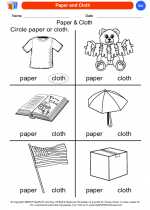 Paper and Cloth
Paper and Cloth  Coloring Worksheet
Coloring Worksheet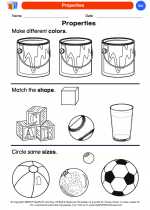 Properties
Properties  Coloring Worksheet
Coloring Worksheet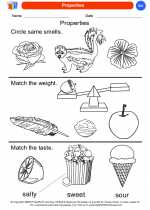 Properties
Properties  Coloring Worksheet
Coloring Worksheet Solids, Liquids and Gases
Solids, Liquids and Gases  Coloring Worksheet
Coloring Worksheet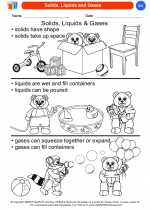 Solids, Liquids and Gases
Solids, Liquids and Gases  Coloring Worksheet
Coloring Worksheet Taking Up Space
Taking Up Space  Coloring Worksheet
Coloring Worksheet Taking Up Space
Taking Up Space  Coloring Worksheet
Coloring Worksheet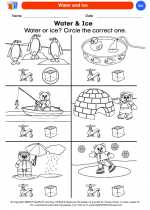 Water and Ice
Water and Ice  Coloring Worksheet
Coloring Worksheet Water and Ice
Water and Ice  Coloring Worksheet
Coloring Worksheet Wood and Metal
Wood and Metal  Coloring Worksheet
Coloring Worksheet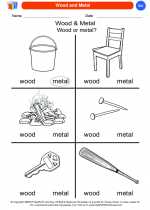 Wood and Metal
Wood and Metal 

 Coloring Worksheet
Coloring Worksheet
 Coloring Worksheet
Coloring Worksheet
 Coloring Worksheet
Coloring Worksheet
 Coloring Worksheet
Coloring Worksheet
 Coloring Worksheet
Coloring Worksheet
 Coloring Worksheet
Coloring Worksheet
 Coloring Worksheet
Coloring Worksheet
 Coloring Worksheet
Coloring Worksheet
 Coloring Worksheet
Coloring Worksheet
 Coloring Worksheet
Coloring Worksheet
 Coloring Worksheet
Coloring Worksheet
 Coloring Worksheet
Coloring Worksheet
 Coloring Worksheet
Coloring Worksheet
 Coloring Worksheet
Coloring Worksheet
 Coloring Worksheet
Coloring Worksheet
 Coloring Worksheet
Coloring Worksheet
 Coloring Worksheet
Coloring Worksheet
 Coloring Worksheet
Coloring Worksheet
 Coloring Worksheet
Coloring Worksheet

The resources above cover the following skills:
PHYSICAL SCIENCE
Motion and Stability: Forces and Interactions
Investigate the resulting motion of objects when forces of different strengths and directions act upon them (e.g., object being pushed, object being pulled, two objects colliding).
Use observations and data from investigations to determine if a design solution (e.g., designing a ramp to increase the speed of an object in order to move a stationary object) solves the problem of using force to change the speed or direction of an object.
LIFE SCIENCE
Ecosystems: Interactions, Energy, and Dynamics
Distinguish between living and nonliving things and verify what living things need to survive (e.g., animals needing food, water, and air; plants needing nutrients, water, sunlight, and air).